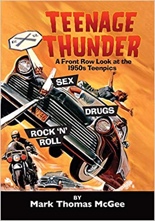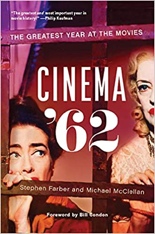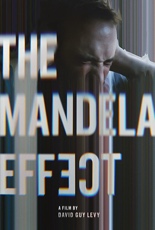
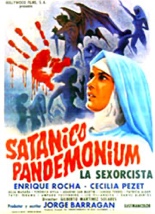 Back in my zine days, sometime in the ’90s, I traded ad space for a handful of VHS dubs, bootlegs of flicks not available in America legitimately. One of these tapes was the Mexican movie Satanico Pandemonium, a nunsploitation film with a moral message: to not make a deal with Lucifer.
Back in my zine days, sometime in the ’90s, I traded ad space for a handful of VHS dubs, bootlegs of flicks not available in America legitimately. One of these tapes was the Mexican movie Satanico Pandemonium, a nunsploitation film with a moral message: to not make a deal with Lucifer.
It’s worked so far.
Comely Sister Maria (the oft-nude Cecilia Pezet) is picking wildflowers one afternoon, as nuns did in the days of the Inquisition, when she meets Lucifer himself (the oft-sleazy Enrique Rocha). After tempting her with a very red apple, he promises to make her Mother Superior if she gives in to his unholy caterwauling.
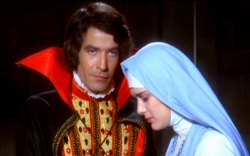 Of course, she does, seducing the town’s young goat herder, forcing a nun to hang herself, and strangling the O.G. Mother Superior after unleashing a torrent of blasphemies. As a celebration, the remainder of the nunnery strips down and dances around in a Satanic bacchanalia that would make a medieval woodcut artist justifiably proud.
Of course, she does, seducing the town’s young goat herder, forcing a nun to hang herself, and strangling the O.G. Mother Superior after unleashing a torrent of blasphemies. As a celebration, the remainder of the nunnery strips down and dances around in a Satanic bacchanalia that would make a medieval woodcut artist justifiably proud.
With not one, not two, but three shocking endings, Satanico Pandemonium — subtitled La Sexorcista for reasons unknown — has gained notoriety in the past 20 years as being the inspiration for Salma Hayek’s vampire queen in From Dusk Till Dawn. But, beyond that name check, the film stands on its own cloven hooves just fine, a bloody gem from comedian Tin-Tan’s director of choice, Gilberto Martínez Solares. —Louis Fowler

